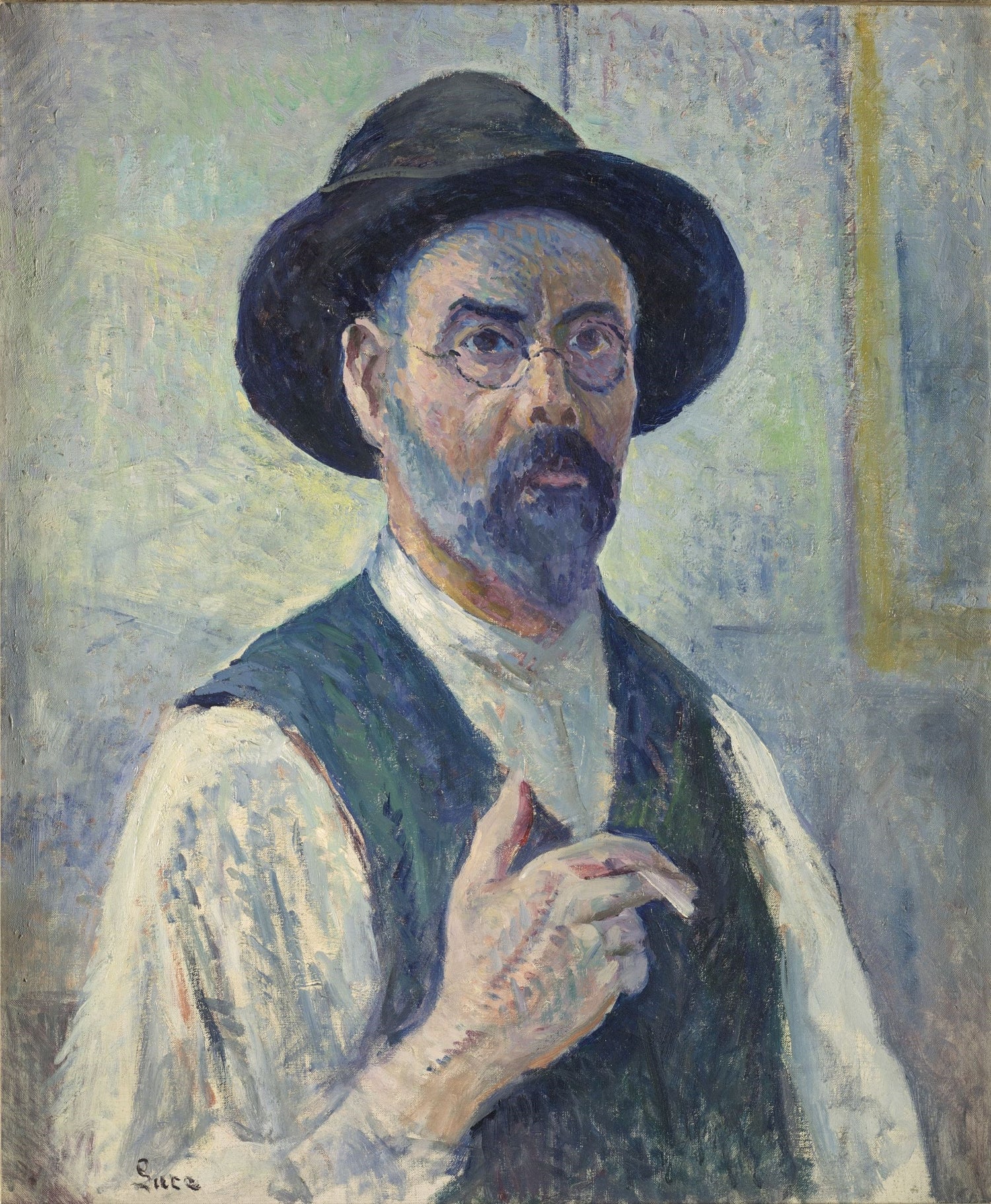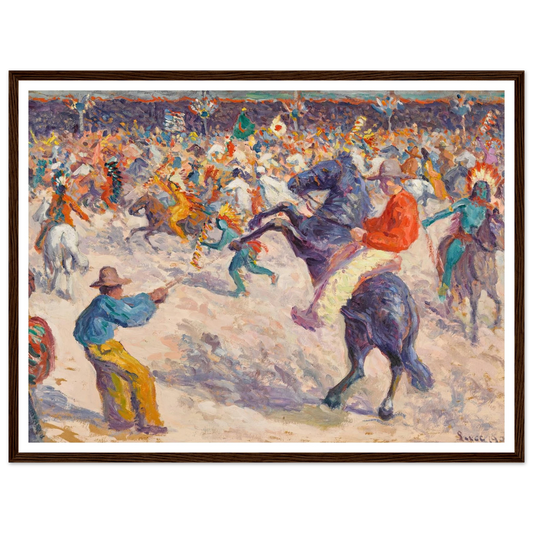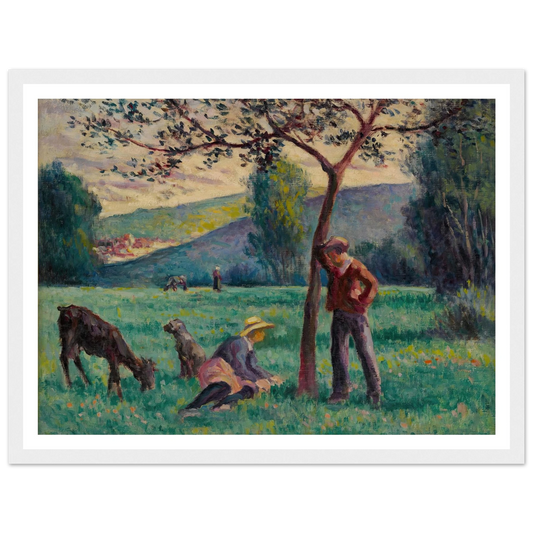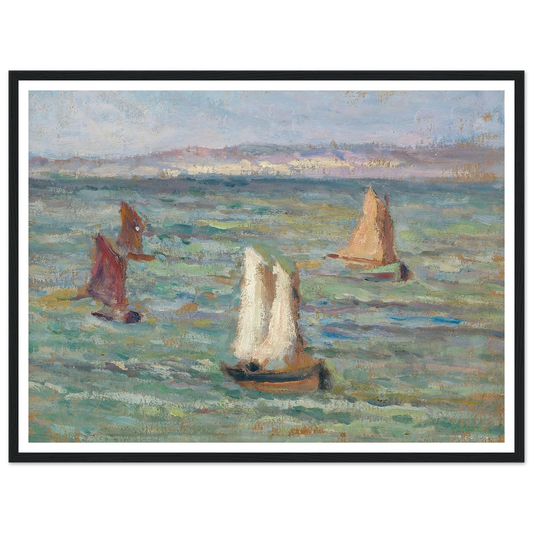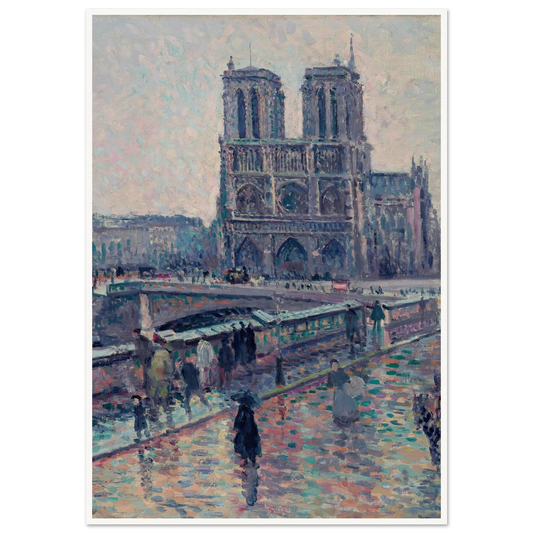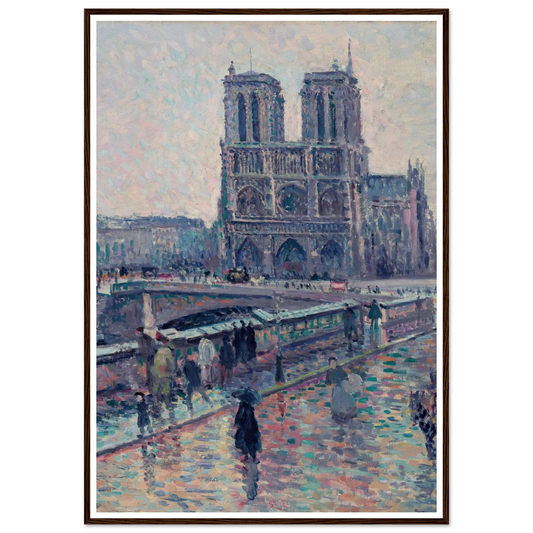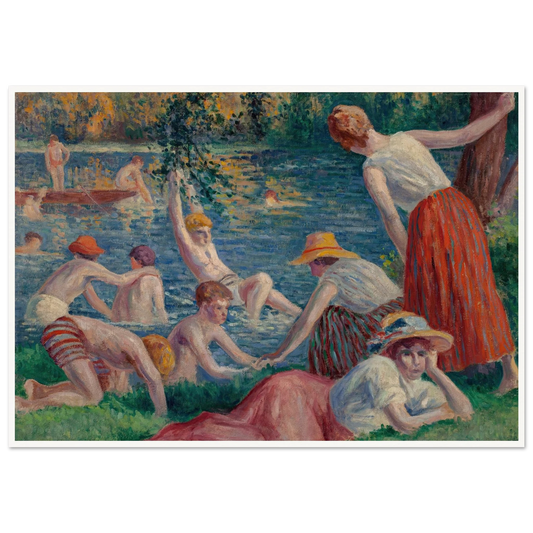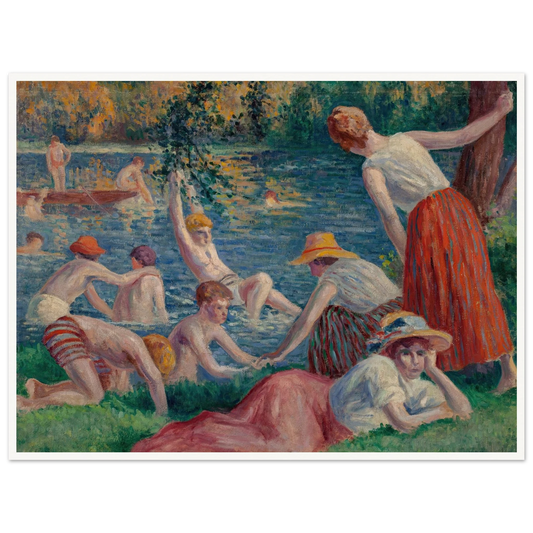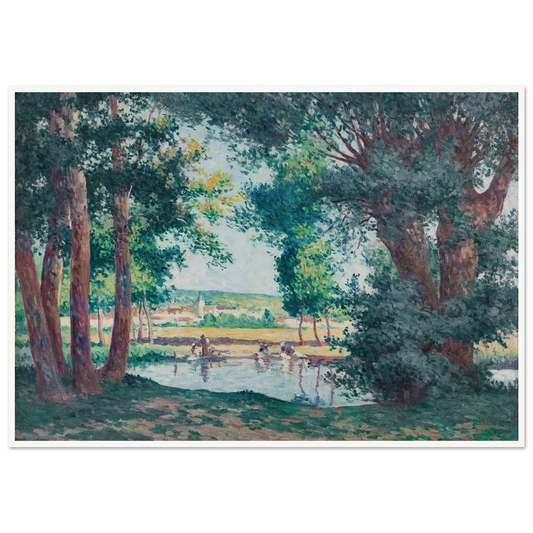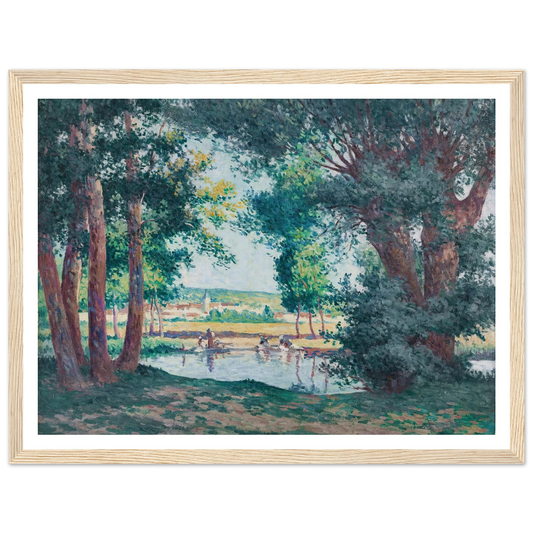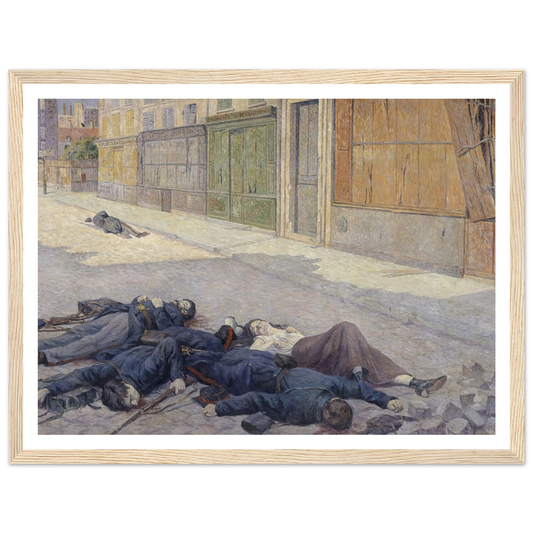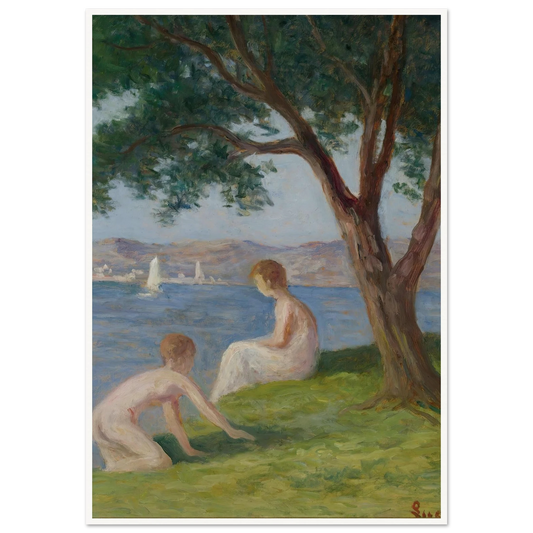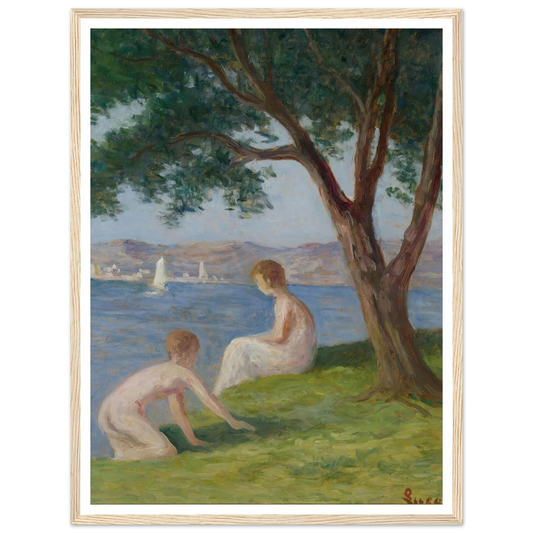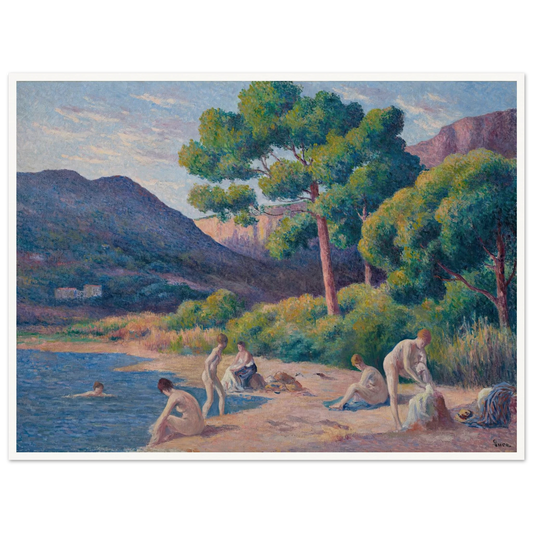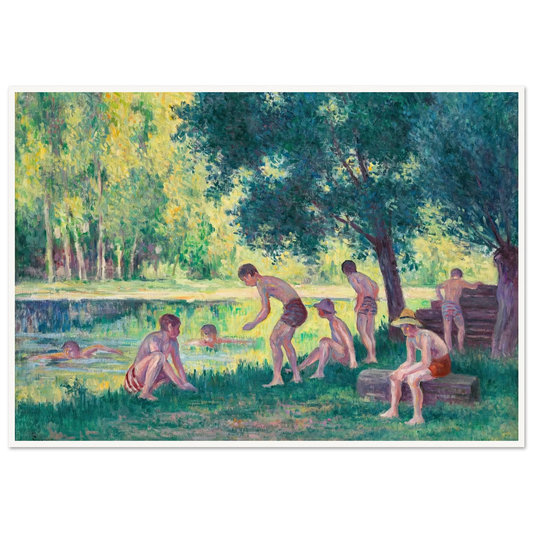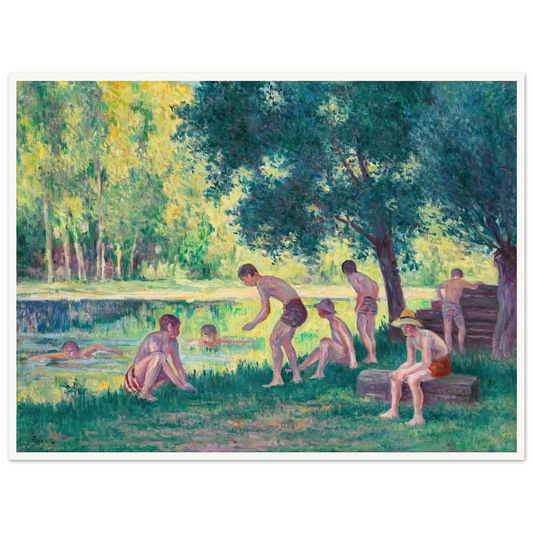Maximilien Luce was a prominent French Neo-Impressionist painter and a key figure in the Pointillist movement, known for his luminous depictions of urban life, industry, and working-class subjects. Born in Paris, Luce trained as an engraver before studying painting and becoming closely associated with artists like Georges Seurat and Paul Signac.
Adopting the technique of Divisionism — applying small, distinct dots of pure color — Luce created paintings that shimmer with light and energy, whether portraying bustling city streets, industrial scenes, or peaceful landscapes. His work often combined technical precision with strong social consciousness, reflecting his deep commitment to anarchist and socialist ideals.
Luce frequently painted laborers, construction sites, and factories, not as symbols of progress alone, but as testimonies to the strength and dignity of the working class. He was also a skilled portraitist and landscape painter, capturing everything from the serenity of the Seine to the chaos of Paris under construction.
Over time, his style evolved into a freer, more expressive form of Impressionism, but he remained true to his political and artistic values throughout his life. Today, Maximilien Luce is recognized not only for his technical innovation but also for his empathetic vision of modern life and his contributions to socially engaged art.


